The network needed a robust solution that could bridge geographical distances, manage unpredictable internet infrastructure, provide both cost efficiency and dependable performance......

Barcelona Football Game Remotely Produced using TVU RPS
The proliferation of distribution channels, the ease of generating content and the growing interest of viewers in choosing their programming on the one hand, and the availability of communications technology with increasing bandwidths and increasingly cheaper prices on the other, are an open invitation to rethink some of our working methods.
View Related Products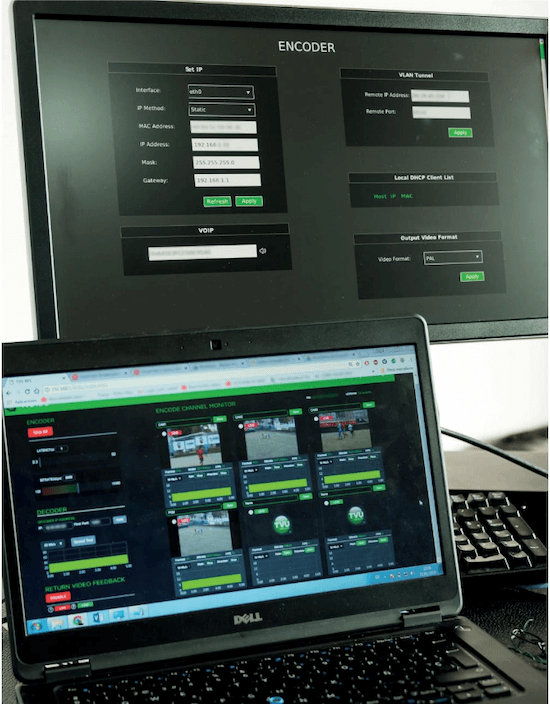
We are thrilled to see how technology makes it so much easier for almost everything around us to become more sophisticated and, at the same time, more straightforward. It thrills us, even more, when tools designed to make our lives easier are made available to us. Achieving this without triggering costs is certainly an advantage, but if we can reduce them too, it is doubly good.
This is precisely what TVU Networks’ RPS offers us today. Simplifying a lot, it is a device that allows producing a live broadcast from a remote installation only by moving the cameras. Although, this is not new. So, what is? The ability to do so through a single “home” fibre optic line. Like with the home one, there is no need for a dedicated line. Having said this, these priorities are very much kept: total stability of the system, synchronisation and optimum coding of signals, in addition to minimum delay.
The entire system only requires two devices: an encoder for the remote location, and a decoder for the local station. These are simple standard two- height rack size units. Easy to transport, more so considering that we only have to carry one device. HD-SDI, Ethernet and DVI connections are available on the rear panel. Easy and quick to install. The management of quality, compression, etc. of audio/video signals is done through a computer connected to the same network with no special requirements. Easy and quick to configure.
As for our tests, we were fortunate enough to be at the broadcast of a sporting event and get first-hand impressions of real-life usage: a local league football match broadcast live on local television.
On the field, there were three cameras with two embedded audio signals each, connected to TVU Networks’ RPS (Remote Production System) encoder. This, in turn, was connected to a fibre optic router identical to the common-or-garden ones we see in anyone’s home, with the same standard 300Mb home connection that most operators offer throughout the country. In the television station, the RPS decoder was connected to one of its 300 Mb data lines on the one hand, and to the SDI signal array on the other.
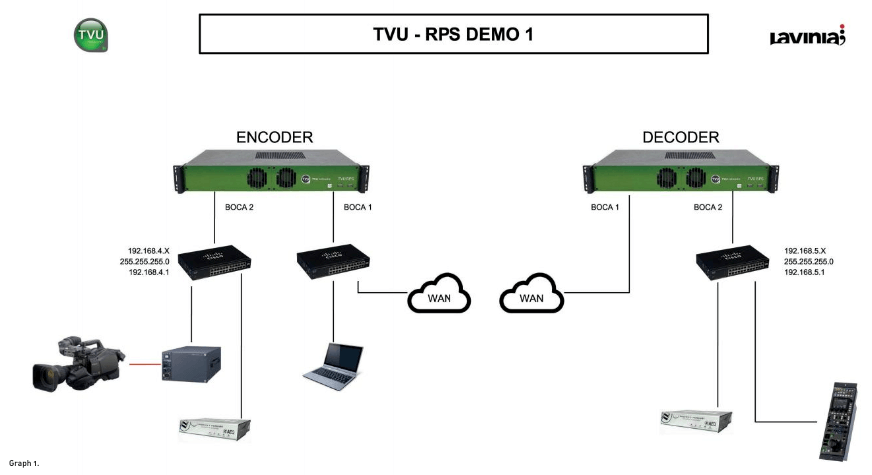
Three cameras were used for broadcast, although the RPS allows up to 6 synchronised HD video signals with embedded audio to be sent simultaneously over a single fibre line. The equipment can be configured with up to two return signals, i.e., 6 with no return, 5 with one return, or 4 with two return signals.
Since the broadcast was being supported over a public network with IP protocol, the RPS equipment configured a virtual private network, so that our devices could see each other, but not be interfered with by third parties.
Going into a little more detail, the concept does not change compared to what we have been doing for years in sports broadcasts, shows, news, etc. The big difference is that now we no longer need the traditional mobile units, nor do we need to replace our cameras with IP equipment. All we need is access to a fibre optic line. What we have found most remarkable is the ability of the RPS to work seamlessly on a simple 300 Mb home line, handling synchronised signals. This is one of the keys we must underscore in this equipment: the ability to synchronise signals and keep them synchronised through a home line.
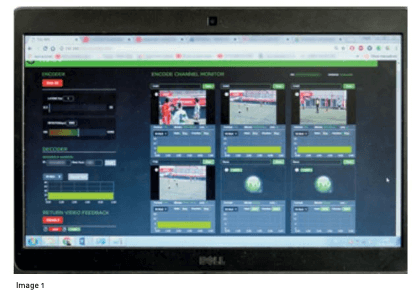
The RPS encoder converts and encapsulates HD-SDI signals, channels them through the virtual private network it creates to our television station, and there, the RPS decoder converts them back into HD-SDI signals, to enter them into the switcher and work with all the means of our installation without having to move anything other than the cameras from the studios. The coding is done in H264, and one of the differential aspects of this equipment is that the signals are synchronised at source and travel synchronised. This means that the signals arrive at the production switcher directly.
The installation follows the scheme of the Graph 1. This graph represents the remote control of the cameras with the remote CCU. The only thing missing would be the SDI links from the camera directly to the RPS encoder and from the RPS decoder to the station matrix. You can see that the equipment uses one network to control the equipment and a different one to broadcast/receive packaged video signals. As we have already mentioned, the test was carried out with three cameras, and a return channel with the produced signal, as can be seen in the Image 1 a screenshot of the broadcast control computer.
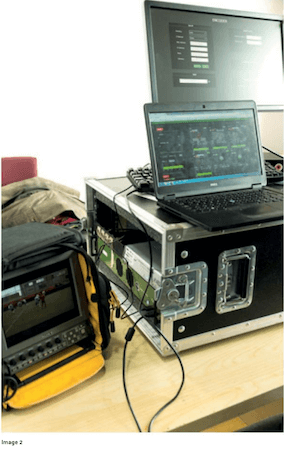
It is noteworthy that each channel can be configured with a different data transfer rate, occupying different bandwidths and optimising the capacity of the line in cases where the available broadcast capacity may be limited. The general plane, or a marker plane, does not need the same data rate, as a closed plane on people or fast moving objects, so we distribute the bandwidth according to each specific need.
The network parameters of the RPS encoder that we see in the “TVU RPS TMB – 02” image are controlled by a screen and a keyboard connected directly, which we could do without once the equipment is configured. In the Image 2 we see that everything needed to replace our mobile unit fits in the boot of practically any car.
The access to the line with which the broadcast was made is exactly that of the Image 3, identical in features and with the same line that any of us might have in our home. It wasn’t just dedicated to our broadcast. Rather it was simultaneously receiving two additional video signals from each of our backpacks.
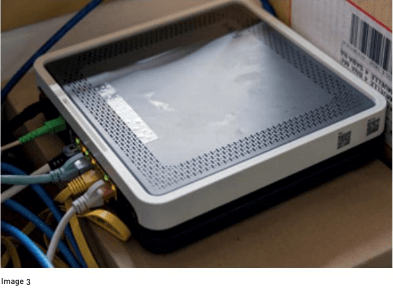
The cameras and operators are the same as we might see in any event, and it makes no difference whether the director is sat in a mobile unit around the corner or a room miles away (Image 4). In fact, the Graph 2 (below) shows how we could mount an intercom system on the same network.
We took advantage of halftime to move to betevé’s facilities, a television studio in Barcelona that transmitted live from its central studios. In “TVU RPS TMB – 15”, we see the production room fitted out with a multiviewer and all the signals, preview and programme monitors, the switcher, etc. During the second part of the match, we found that all commutations were always perfectly synchronised, and any effect or transition was executed without image defects or artefacts of any kind. There is no noticeable difference in quality in the broadcast if we reduce data rates from 10 to 8 Mbps on each channel.

The delay, which can also be compromised in these scenarios because it is sensitive to the stability of the sustained data rate supported by the fibre line, was no problem either. Remember that we are broadcasting HD signals over a home line, not a dedicated one. The RPS allows setting the delay with values from 0.3 sec. During the first part of the match, the broadcast was configured with a 1 sec delay, and for the second half, it was reduced to 0.5 sec. No problem arose, and even the longest time is now admissible in a broadcast these days. Bear in mind that this delay is a determining factor set by the quality of the available network, and not by the system itself. In fact, this configuration capability allows avoiding broadcast interruptions due to the possible lack of stability of the available data line.

The technical teams confirmed their satisfaction with the results of the test, which yielded precise synchronisations, no faults and delays within the limits.
The RPS decoder (Image 5), has virtually the same appearance as the encoder, and its broadcast control software, Image 6, generates an application window for each channel with its respective control parameters.
What does all this mean in terms of operational work? Very simple: We could do without the mobile units as we know them today and use a simple car or small van to move operators, cameras, tripods, and the case containing the RPS encoder. And in production terms? If we consider the whole amount of production rooms that are inactive in many broadcasters and all the time that we are not producing from the local studios, we could convert any studio that has a home fibre optic line into the studio, just by adding an RPS next to the matrix.
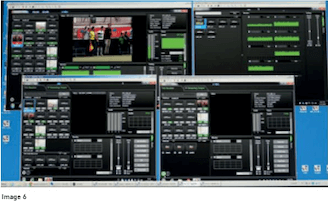
What does this mean in terms of costs? Consider the savings in investment by not having conventional mobile units. If we add the possibility of renting the cameras in far- away destinations and only moving our RPS encoder. Let’s keep adding… How much does it mean not having to move the entire technical production team? We can also add that all the production equipment, which would otherwise have been inactive, have remained active and profitable. The longer we have our equipment in operation, the more competitive we will be as a company.
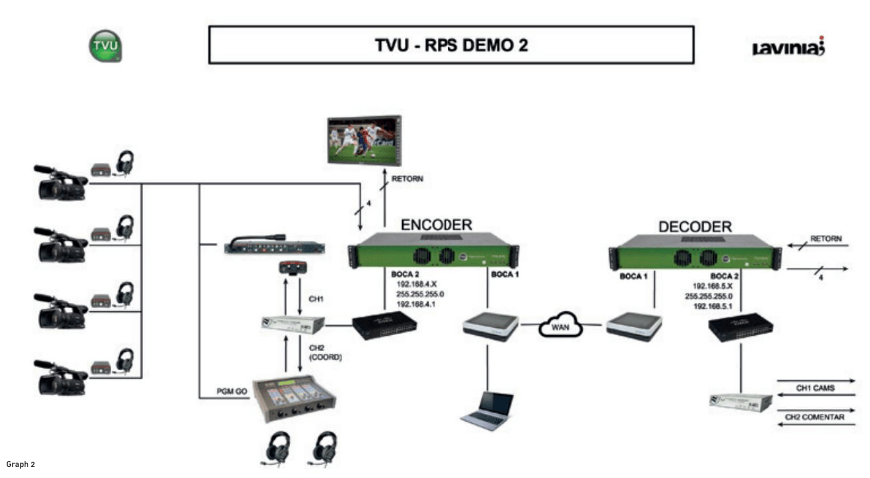
If all this were not enough, our range of action is no longer limited by the feasibility in time and distance of moving our equipment, and we can also cover many more events in many more locations. Almost simultaneously. Even if we need to cover distant scenarios, simply by having an RPS encoder in each remote location. This scenario, by the way, would also allow carrying out our live performances combining scenes distant from the broadcaster and distant from each other.
What about limitations? Yeah, nothing is infinite. But the six channels are by all means no limitation. With two devices, we can reach up to 12 channels, which could be up to 8 in broadcast and 4 in return, and thus grow successively, because there is the possibility to reference signals in cascade when adding devices, and all of them would be synchronised. The fact that the channels are HD does not imply any limitation either, since thanks to the synchronisation, four channels can be used to send a 4K signal.

Differences? One of the aspects that makes RPS something else is the creation of a virtual private network (RPV or VPN). The feature that makes it outstanding is being the only equipment of this type on the market, at the time of these tests, that multiplexes synchronised signals.
In short, what seems to open more doors is the reduction of costs, facilitating the possibility of covering events affordably, unthinkable until now. This allows a multitude of potential clients who were unable to access a live broadcast before to do so now. Practically any sports club, event centre, cultural centre, association… can have a fibre optics line for its communications. You don’t have to lug large technical equipment around anymore.
This opens a multitude of new market options: from the small company that is devoted to making this type of broadcasts to the big ones that will now be able to serve in many more places, from the remote producer that lends its services to the corporation that can make its investment profitable with greater use times, spaces with fixed cameras that can be controlled locally or remotely, etc. In these times of technological change, it is also a cool tool to facilitate and accelerate the transition to IP of audiovisual service providers and customers. There are so many applications that we could turn this into a monographic with the new market niches.
For those who are not familiar with the game, it is interesting to remember that TVU Networks teams have been providing their equipment for many years and in world-class sporting events: football, tennis, winter and summer games, basketball, hockey, football, etc. Surely we have all enjoyed ourselves as viewers of broadcasts that have been carried out thanks to their technology.
Start a Discussion
For any information on this case or for any enquiries on the above products
We can help